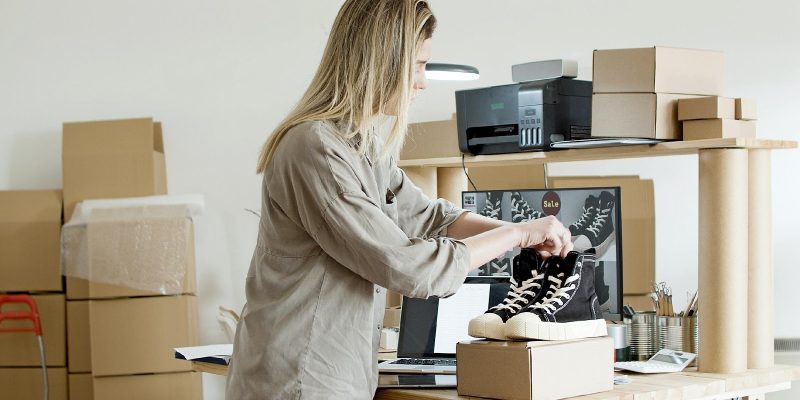Are you planning to move to a new home soon? Establishing your home somewhere else from scratch is the most tiresome task. Rooting out your well-settled life requires thorough planning on your behalf. It is essential to minimize the disturbance it will cause in your life and the damage to your things accumulated after years of hard work. Some of them also might hold sentimental value to you, and you would not want to see them damaged and worn out. But you do not have to worry about that, as you can keep them in a storage facility until you are ready to flaunt them in your new house! Your task here is to pack them properly, so they may not lose their integrity while in storage. So if you are a newbie in this task and unsure how to carry it through, here are some life-saving tips that can benefit you.
1. Protect the Items Against Weather Extremes:
Extreme weather can harm certain items such as electrical appliances that you should not expose to either too hot or too cold temperatures. Similarly, the high humidity index, which the cities like Indianapolis often encounter in summers, can cause mold growth. Items such as blankets, carpets, and rugs are more vulnerable to it as they have more capacity to absorb moisture. To avoid that, rent out temperature-controlled facilities to store such items. You can surf through some Indianapolis self storage units if you are moving there or others near you and look for their temperature control facilities.
However, if it is not affordable to you, take precautions to eliminate the temperature-induced damage your goods can incur. If you have washed your items, such as clothes, or carpets, ensure they are dry, and no moisture remains. Expose them to plenty of sunlight before rolling them away. Make your storage boxes airtight to keep the excess moisture-laden air away. Also, place your clothing, especially the fluffy sweaters and coats, in garment bags and hang them in wardrobe boxes. Your choice of wrapping material holds much importance in this regard. Try not to use plastic wrappings as they trap moisture inside. Go for paper wrappings instead. Once the molds manage to grow, completely eradicating them is very difficult. Restoring your items will weigh heavily on your pocket, and there is no surety the molds will not grow again.
2. Clean and Disinfect the Items:
Tossing uncleaned items in a storage facility will fester unpleasant odor during storage. With the hassles of setting up your new house, you would not want an additional load of disinfecting your items after retrieving them from the storage facility. So try to check off this task from your list beforehand. Dry clean the rugs and blankets so they are dust-free. If not, vacuum them thoroughly. Clean all your appliances with disinfectant wipes, cleaning sprays, or mild detergent solutions made at home. You can also make use of the baking soda solution for this purpose. Once you feel your items are spick and span, they are ready to be stored for the required period.
3. Get the Right Packing Materials:
Getting an appropriate packing material according to the type of item is essential to protect it from damage. Try not to use printed papers for packing as the ink can leave stains on your spotless things. Secondly, provide a cushion of bubble wraps for fragile items like glass and china dishes. It will act as a shock absorber, protecting them against damage during transport. Pack your dishes individually with packing papers and provide the extra protection of bubble wraps. Also, provide thick padding around the boxes, and do not leave empty spaces. Cover all the unfilled areas within the boxes using styrofoam blocks, or they will crumble when stacked over one another. Likewise, use dust sheets to cover your furniture, such as sofas. As an additional precautionary measure, use masking tape on the mirrors. Paste it in a cross shape on the mirrors to decrease the likelihood of breakage during transit. Finally, use plastic storage boxes since they are more durable and offer higher protection. Cardboard boxes can easily tear if they get wet or under the weight of heavy things. However, these are cheaper and pocket-friendly. So if you use them, tape them properly and avoid over-stuffing.
4. Properly Label the Storage Boxes:
If you are using transparent plastic boxes to pack up your things, labeling them will not be necessary. However, if you have used cardboard boxes, do not forget to add a label. It will save you much trouble while unpacking as you will not have to sift through each box to find the required things. Is a box labeled ‘clothes’? Shift it to your bedroom and unpack it. Or does it say books? Shift it to your study room or designated study area.
5. Dismantle the Large Objects:
If you plan to store large furniture items such as beds, disassemble them and pack their parts individually. It will also save space and make room for other things. We usually do not consider keeping the small fastening elements safe, such as the bolts, screws, and nuts. One or two always go missing by the end of the task. So while taking apart your heavy furniture, place the small items in plastic bags. Seal them tight and attach them to the part of furniture they belong to. This way, you will go through the whole process of moving your furniture from your house to the storage facility and your new home without losing any of them! Similarly, for electrical appliances such as air conditioners and washing machines, disengage their hoses and pack them with their respective equipment.
6. Pack the Items In a Safe Order:
After wrapping all your items, it is time to put them in storage boxes. Do not stuff them haphazardly inside and follow an order. Place the less used items first, followed by the most frequently used. Also, avoid keeping fragile items at the bottom as they can break under the weight of the objects stacked over them. For the mugs and glasses, place dividers within the boxes. Also, try not to use huge boxes as it will become difficult to move them. Multiple medium-sized boxes will be a good choice for convenient packing, transport, and unpacking.
Conclusion:
Moving your setup is stressful enough, so save yourself from the stress of damaged items you are so ready to display in your new home. With your mind occupied with multiple tasks at once, you may overlook small things while packing your items. So, give special attention to the do’s and don’ts of packing, and your goods will make their way to your new house without wear and tear!




















